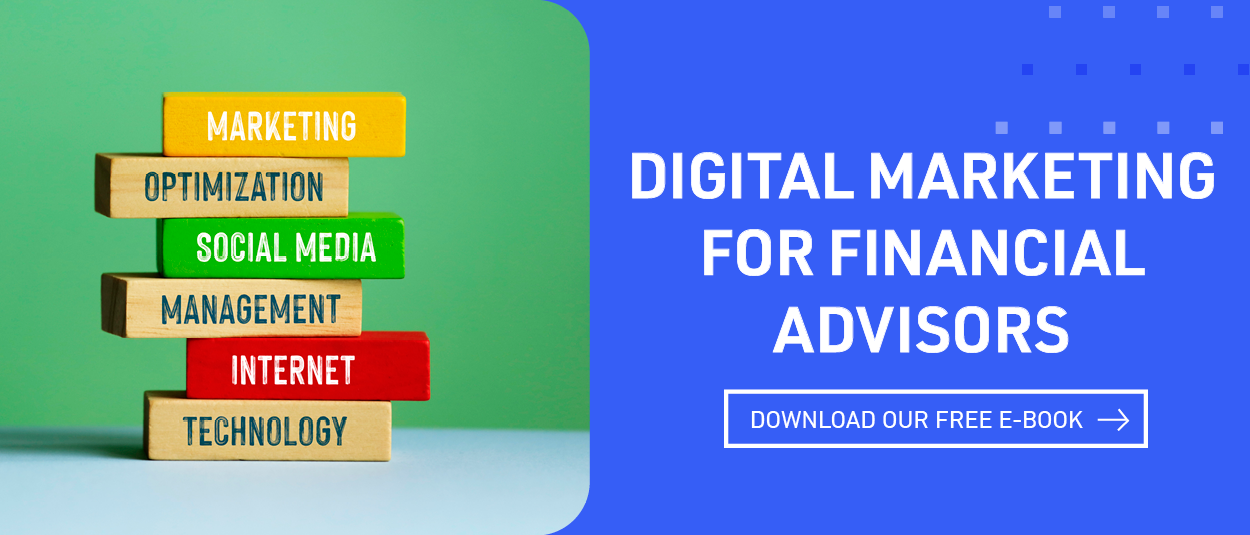Why Do So Many Financial Advisor Websites Fail?
Most financial advisor websites function a lot like glossy sales brochures. They are attractive presentations of information about the firms and the professionals who work there. Their focus is on Who We Are, What We Do, Who We Serve, and Why Select Us.
This focus actually helps investors who find the same information on most financial advisor websites. It makes comparisons simpler for investors who may or may not know much about financial advisors.
However, there is a certain paradox when it comes to the expectations that financial advisors have for their websites. They expect their websites to be a consistent source of high-quality leads. But, that is not happening and they aren’t sure why not.
Sources of Traffic
Websites produce their own traffic when investors enter their URLs in the search engines. This action tells advisors the visitors already know their firms. They entered an advisor URL in a search engine. This could be the result of advertising or a referral from a friend, family member, associate, or another professional.
The source does not matter. What does matter is they visited an advisor's website after they entered the advisor’s URL in Google.
What about the much bigger number of investors who do not know advisors. They have to find financial advisors on the Internet by entering the right keywords. For example, an article on a topic that interests them, and the article leads them to an advisor’s blog. Or, they saw an advisor ad on social media channels that invited them to attend a webinar.
The bottom-line is websites do not produce their own traffic. Investors have to know the firms, at least by name, or they have to find financial advisors based on the keywords they entered into search engines.
Custom Websites
A high percentage of financial advisors rent template-based websites that were not designed to produce leads. They are the online sales brochures referred to at the beginning of this article.
A key element for any custom web design is the differentiating characteristics that help investors identify who they want to contact for interviews.
The content on the sites should be more about investor benefits and less about features of the firms.
What About Internet Visibility?
Financial advisors can have great websites, but the websites have nothing to do with visibility on the Internet. Sure, investors can enter a URL in a search engine, but this means they already know the firm. What matters most on the Internet is reaching people that don’t know anything about the firms. That means they have to find financial advisors after entering certain keywords in search engines.
Internet visibility is based on two considerations:
- Number of relevant keywords
- Page rank for those keywords
Advisors want to rank for hundreds of keyword combinations that are used by their ideal types of clients.
Next is the page ranks for those keywords. The primary rank all advisors are seeking is page one. That’s because 91.5% of Google users do not scroll to page two. Only 4.8% scroll to page two and 1.1% to page three. After page one rankings, financial advisors are pretty much invisible.
Since just about everyone knows about the importance of page one ranks, this aspect of digital marketing is intensely competitive. It pays to use the services of a digital marketing agency that specializes in working with financial advisors.
What About Website Visitors?
There are four primary ways investors can find financial advisors on the Internet:
- Blog articles
- Social media
- Local directories
- Paid advertising
The first three are SEO (Search Engine Optimization) strategies. The fourth is an SEM (Search Engine Marketing) strategy. All of them have a common goal - produce visitors for financial advisor websites.
Getting investors to financial advisor websites is the first challenge. Keeping them on the websites, long enough to learn more about the financial advisors, is the second challenge.
Leads Versus Contacts
There is a major difference between a lead and a contact. Both are extremely important for financial advisors when the only difference may be the timing for hiring a financial advisor.
From an advisor’s website perspective, a lead is an investor who has an immediate need for a financial advisor. Investors are using the Internet to find and research financial advisors before they contact them to schedule interviews.
On the other hand, contacts do not have an immediate need for financial advisors. Instead, they are using the Internet to find financial information or answers to financial questions. On a more negative note, their only need is information. On a more positive note, they will eventually have a need for a financial advisor and an effective funnel and nurturing system that will lead them back to the advisors who helped them.
Contacts feed financial advisors’ drip email systems which are an important part of an advisors’ funnel strategy.
What About Drip Emails?
Timing can be an adversary or a friend. It is an adversary when investors do not have an immediate need for financial advisors. They are currently learning more about:
- Financial advisors (in general)
- Specific financial advisors
- Financial topics
They may be going through a learning curve for a lot of reasons. For example, they are retiring in a few months and are learning more about financial advisors, their services, and financial topics.
Some advisors are disappointed when a visitor or lead does not have an immediate need for a financial advisor. However, being their source for information, advisors can build important competitive advantages that benefit them when investors are ready to start interviewing financial advisors.
What About Financial Advisor Sales Funnels?
Internet visibility and website traffic are part of a much bigger marketing system for most financial advisors. It is the top of a sales funnel that produces most of the new clients for financial advisors.
Step One, at the top of the funnel, investors have to be able to find advisors on the Internet. Perhaps the advisor wrote an article or produced a video that interests investors.
Their interest creates the Second Step that brings them to the financial advisors’ websites.
The worst-case scenario is the investors exit the site without initiating any form of contact. In this case, the advisor achieves some brand name recognition and the advisor hopes they return at some future date.
A more positive result is they spend time on the financial advisors’ websites learning more about the firm and the professionals who work there. If they have an immediate need for financial advice, they will initiate a relationship by providing their contact information.
If they do not have an immediate need, perhaps there is a free offer on the site that is compelling enough they will register to obtain it.
Once advisors have their name, telephone, and email information they become leads for their services. The next level in the sale funnel is the nurturing process that converts leads into revenue-producing clients.


